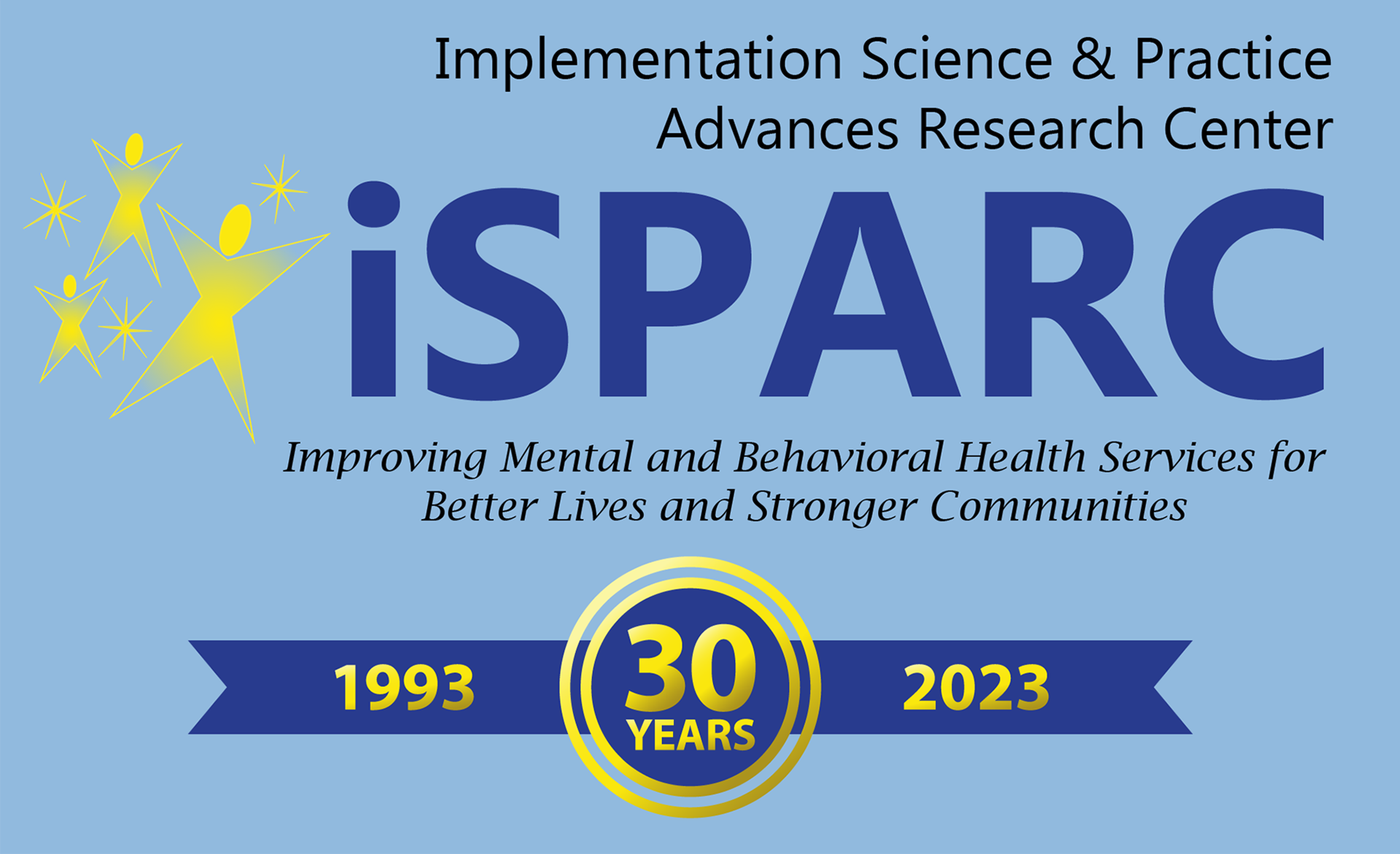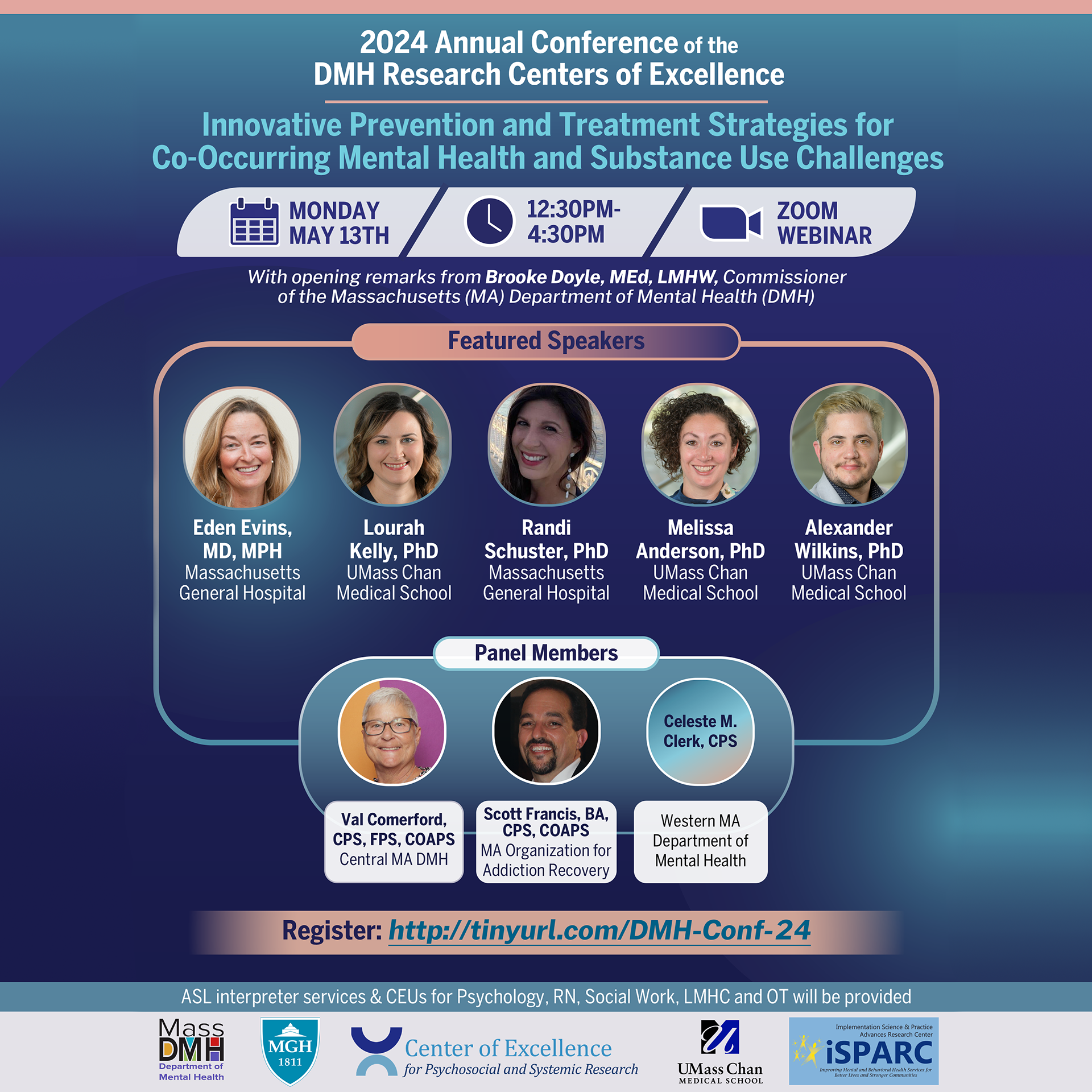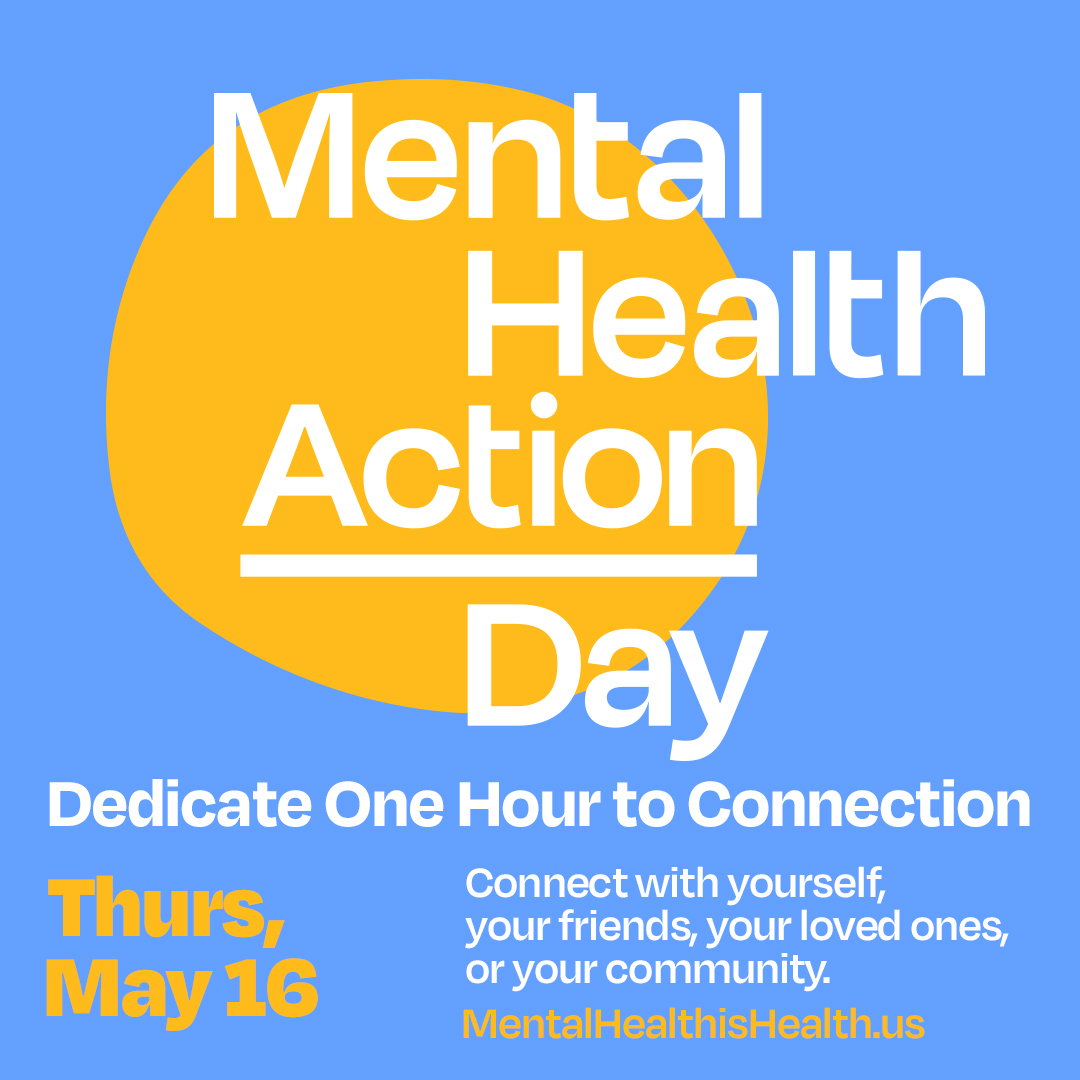May is Mental Health Month
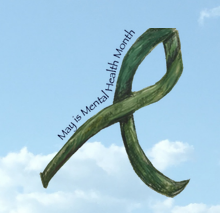 Each year, iSPARC partners with members of our Community Advisory Boards to recognize May is Mental Health Month. This year, members of the weSPARC Insight Advisory Board contributed their thoughts, feelings, and experiences on the topic of connection and the relationship between connection and mental health.
Each year, iSPARC partners with members of our Community Advisory Boards to recognize May is Mental Health Month. This year, members of the weSPARC Insight Advisory Board contributed their thoughts, feelings, and experiences on the topic of connection and the relationship between connection and mental health.
As evidenced below, connection can take many forms and can be experienced in a variety of ways. We hope that these shared experiences help you reflect on your own experiences of connection and mental health.
Ecomap
Ecomaps are tools to visualize connections and the flow of resources or energy involved in such relationships. Although often used as a clinical tool, I wanted to apply the exercise to my own life so I can better understand the places and people that impact my life. It is easy for me to feel isolated, and the exercise helped me realize I’m more connected than I realized.
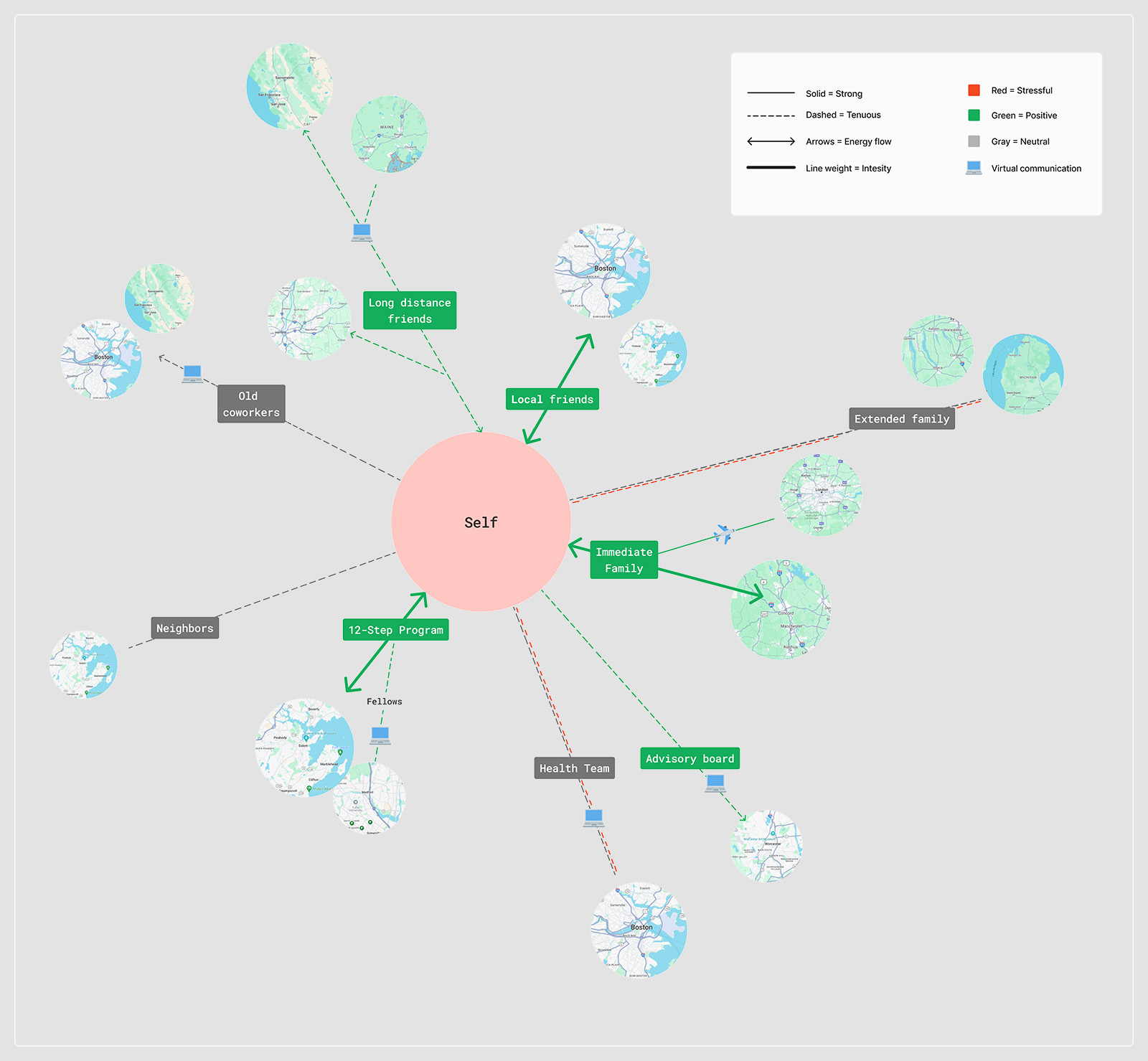
Objects of Connection
Pictures, drawings, videos, and/or descriptions of the “Objects of Connection” we have received from people during difficult times.
A friend knit the squirrel and gave it to me, not knowing that I was feeling down. It lifted my spirits immediately! And, whenever my anxiety starts rising, I hold/look at the squirrel and I can't help but smile.
A ratty sweater, which I asked my dad to bring for me during my first hospitalization. Its condition hasn't changed much since I first got it as a hand-me-down as a child; looking back I'm not sure why it was given to me in such condition, but even now as an adult, it's still oversized, and has always been a comfort item I wear around the house when I really need to.
Winnie the Pooh and a rocking chair, my brother Patrick gave me Winnie years ago. When I was upset, I would hug him and cry. It's been close to 2 years since my brother Patrick passed away. The rocker was my mom's.
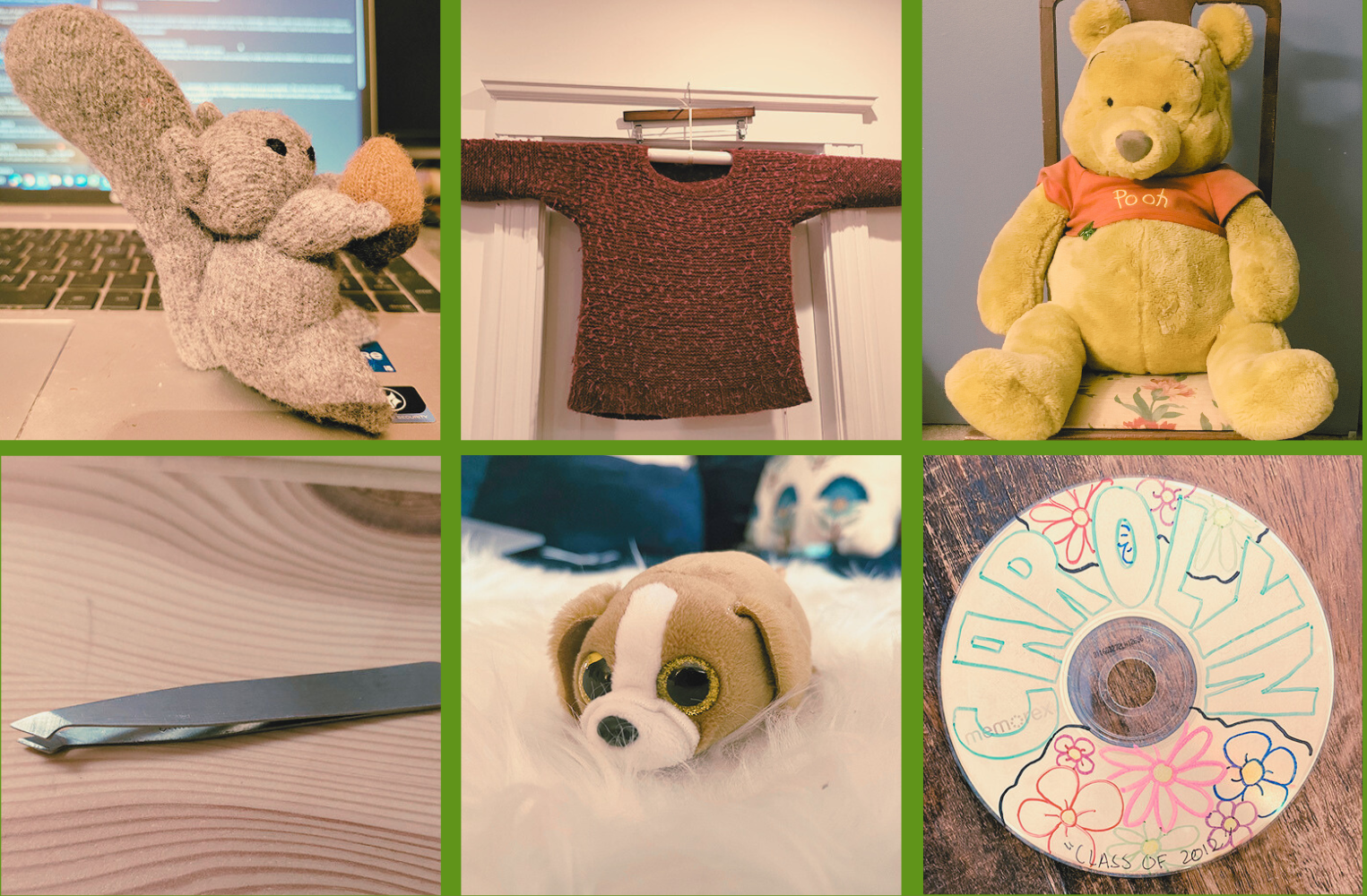
This is a small stuffed dog that my roommate gifted me when he learned I would be admitted to the hospital. It was a small, but significant gesture of kindness during a time of immense despair and shame. I brought this guy to the hospital and he was a comforting reminder that people cared about me, despite what my brain was telling me at the time.
A pair of tweezers, which I asked my dad to bring for me during my first hospitalization. He visited me almost every day, during the two-and-a-half weeks I was there, and I felt a strong need to keep doing at least some of my normal grooming so that, even if being in the hospital was about focusing on what mattered most, I still kept some semblance of dignity when he came to see me. When he asked, I told him I didn't want my younger siblings to see me until I was ready to come home.
A mix CD that I wasn’t able to listen to until I got home from the hospital (due to hospital restrictions).
Sisterhood of the Flying Pig
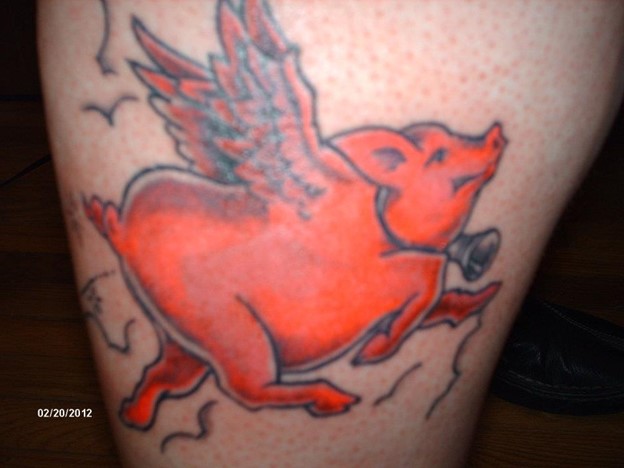 the names have been changed to protect the privacy of the author.
the names have been changed to protect the privacy of the author.
M, P, and I have known each other for the better part of 30 years. We have seen each other through plenty of life’s tribulations: divorce, the death of J (who was part of and sometimes leader of the Sisterhood), cancer, our mental illnesses, and more. But we have also seen each other through life’s beautiful moments: M’s daughters growing up, finding life partners, and having children of their own; my sister getting her second master’s degree during the height of the pandemic; and P finding peace after her divorce. We don’t talk on the phone very often, but we communicate through social media, postal mail, and other ways. We live far enough apart that we are a plane ride away from each other. So, every couple of years we plan a gathering of the Sisterhood and we take turns visiting each other. Our bond is so strong that when we get together, you would think we each other last week.
How did we become known as The Sisterhood of the Flying Pig?
About fifteen years ago or so, M’s daughter designed a logo for M, P, J, and I of a flying pig farting rainbows and stars. Of course, we laughed and loved it right away. M got the design tattooed on her arm first. Then, M, J, and I sat with P as she got hers tattooed on her hip. P’s pig is wearing a queen’s crown. The artist working on P’s tattoo was surprised that P fell asleep during the session as this was P’s first tattoo! Since I always say that I will arrive with my bells on (and I do), my pig has a cow bell around its neck (we all need more cow bells in our lives).
The second to last time we got together was a year and a half after the COVID-19 pandemic had begun and J had just died less than a year before. This trip was a healing one for us as we had lost a best friend and fourth Musketeer. The trip was full of tears, but it was also full of laughter. We still can’t figure out how we did not hear the fire alarm in the house nor the fire trucks as they arrived, while we were sitting on the back porch. We only realized that something was going on when I saw a strange man looking out the kitchen window! Ginger (P’s dog) never barked either! Thankfully, there was no fire, just a lot of smoke, and we were all ok. As to why there was smoke and the aftermath, that’s a story for another time. However, we still get a good laugh about it.
At the end of the trip, M and I traveled to our respective states. When M arrived at the airport at home, her husband was waiting for her with a sign. The sign had our design on it with the words “The Sisterhood of the Flying Pig: The Time is Now”. And the name has stuck.
We have a very strong bond and love each other dearly. We have supported each other through thick and thin. We are friends. More importantly, we are family.
Connective Tissue:
Howard's mailing lists (MA)
In late 2019 I asked a supervisor about the Peer Community in Massachusetts outside the agency we worked at. I knew about the RLCs (Recovery Learning Communities), but I was hoping there was a broader network that included Peer Specialists working at traditional mental health agencies, Peer-led legislative advocacy, and the RLCs, and...really anybody who wanted to pitch in or share resources across the commonwealth. She gave me Howard's email address, and that's how I heard about the iSPARC advisory boards, ODA (Opening Doors for the Arts), MUCH (Massachusetts United for Connection and Healing), monthly virtual open mic nights through Boston-DBSA, just so many opportunities to connect. My supervisor had told me Howard has a few separate mailing lists - like ODA, which has its own listserv because it has access to art and community events; but I don't remember which other specific lists he has, because I asked to be added to all of them. I wanted to get everything and make my own choices once I got a sense of what's out there. A few times I've even sent something to Howard to share to the listserv, like information about a temporary program or a job posting from a peer who was having trouble finding a Personal Care Assistant.
Just email him at howarddtrachtman@gmail.com and ask about his mailing lists. There's no "red tape" or referral process, but if you want to share how you heard about him and his mailing list, he does appreciate knowing how that information reaches people so he can make the most of it.
RMHBs and RACs (CT)
When I moved to Massachusetts, I knew that the infrastructure around mental health, the peer community, all that, would be very different from what I'd had before. The Regional Mental Health Boards (RMHBs) and Regional Action Councils (RACs) in CT spoiled me forever on this idea of "connective tissue" across the state. The RMHBs and RACs were created as a way to make sure people living and working in the state had a say in Review and Evaluation (R&E) of programs funded through the state's Department of Mental Health and Addiction Services (DMHAS); but by the time I got involved, they were already doing so much more. Since they didn't compete with service provider agencies for clients or funding, and had a Board of Directors made up of local community members, they'd been able to build lasting relationships with different state-funded and private-sector groups and the people who used those services. Over forty years of staffing changes, and fallout from budget cuts, and changes at the state house, the RMHBs and RACs built and maintained that connective tissue between residents and the organizations that served them. Mental health and addiction service provider agencies, advocacy groups, peer-run organizations, even housing authorities and libraries - if it was a resource that helped people live in their communities of choice, somebody from that organization or at least that field was connected to the RMHBs and RACs, so information got shared.
For Mental Health Awareness Month in May, my RMHB had a calendar based on all of those relationships: trainings and workshops, film screenings, health fairs, presentations, walks, fundraisers...there was something happening almost every day, and most days more than one thing was listed - and that calendar got shared through all those local organizations to anyone that was interested. The staff for each RMHB or RAC was tiny - barely 2 full-time employees - but their whole job was getting that community buy-in from residents and agencies.
Restrictions to Connection while Hospitalized
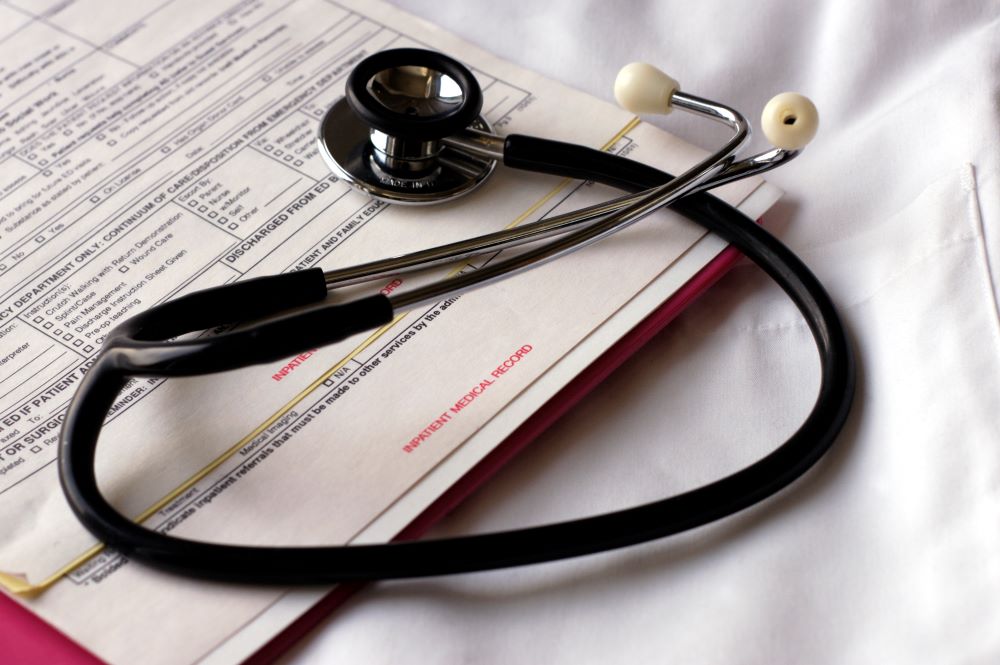 As patients in a psych unit, we weren't allowed any physical contact. During my most recent hospital stay, I connected with a fellow patient who was also around my age (mid-20s). When she was discharged, we both wanted to hug goodbye but we weren't allowed, so we did a big air hug in the middle of the hall. I've shared that story a lot, and when people say, "What about a handshake? Maybe that would have been allowed?" I answer, "I hadn't thought of it at the time, and I'm glad I didn't. A handshake is so impersonal, and that rule was so stupid - the nurses and psych techs still pinched my elbow 'affectionately' and then acted indignant when I said I didn't want them to. Two patients who want to comfort each other with a hug can't do that - we're not allowed to have mutual-consent contact - but the staff can do whatever they want? No. I want them to see how stupid their rules are. They can deal with any discomfort they feel about the absurdity of what options they've left us.
As patients in a psych unit, we weren't allowed any physical contact. During my most recent hospital stay, I connected with a fellow patient who was also around my age (mid-20s). When she was discharged, we both wanted to hug goodbye but we weren't allowed, so we did a big air hug in the middle of the hall. I've shared that story a lot, and when people say, "What about a handshake? Maybe that would have been allowed?" I answer, "I hadn't thought of it at the time, and I'm glad I didn't. A handshake is so impersonal, and that rule was so stupid - the nurses and psych techs still pinched my elbow 'affectionately' and then acted indignant when I said I didn't want them to. Two patients who want to comfort each other with a hug can't do that - we're not allowed to have mutual-consent contact - but the staff can do whatever they want? No. I want them to see how stupid their rules are. They can deal with any discomfort they feel about the absurdity of what options they've left us.
You Gave Me Life
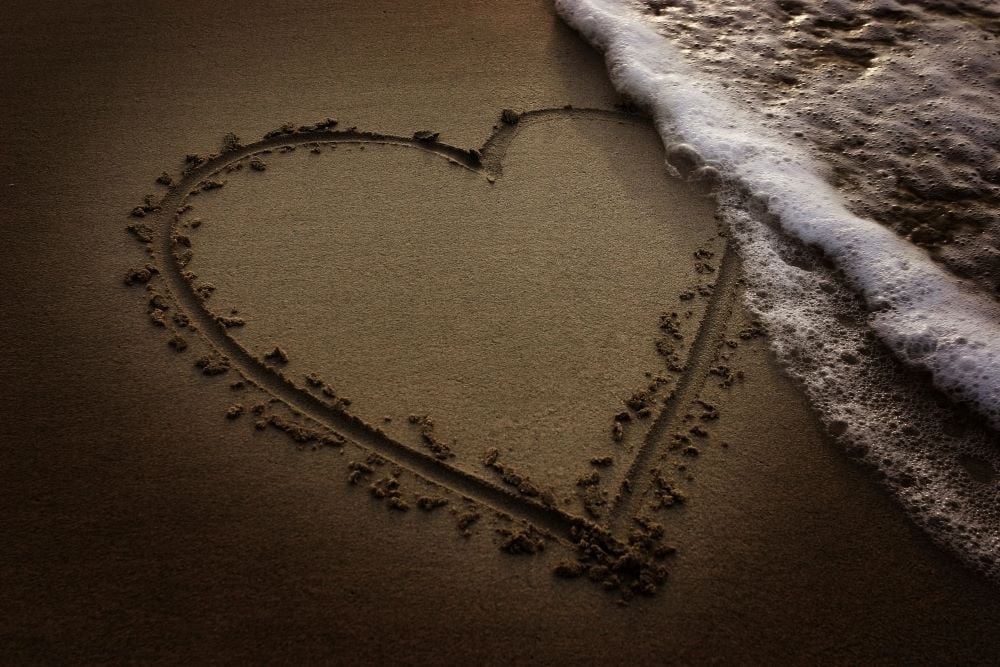 I was out there, in what felt like a very cruel world. A world that had no meaning, full of emptiness and out of hope. A world that meant nothing to me. That had crushed me, broke me, and threw me away.
I was out there, in what felt like a very cruel world. A world that had no meaning, full of emptiness and out of hope. A world that meant nothing to me. That had crushed me, broke me, and threw me away.
In the darkness and despair… I was lost.
I was lost with nowhere to be found. No effort out there… searching. Searching for what? What was there to search for? Nothing of value. What was out here in this very cruel world was trash. Worthless trash. …
This itsy, bitsy, teeny weenie angel disguised as a sparkle that just happened to stumble and found ME…. That angel disguised as a sparkle hid inside of me.
That light that just kept getting bigger and stronger. It continued to grow and started giving me this warming sensation, that melted my heart, that provided comfort and gave me hope. That angel disguised as a sparkle. Gave me this thing that I had lost and thought that I would never find.
Little by little, first I found feelings that I never knew existed.
I became addicted and really chased that feeling. It has grown into love, the willingness to change. All through this journey, I bumped into HOPE. That hope was nurtured and cared for. It grew so big, that it turned into belief. And then, that belief that I nurtured and cherished, grew into love and that love was you.
My beautiful gift that God gave ME. That made me feel worthy of protecting and caring. No matter what happened. I will be okay. I, then, discovered that angel was YOU.
My beautiful daughter, I named you Minorca. That angel is you. God gave me this gift to love and protect. It has been really difficult, and I did my best. You gave me the courage to fight and take care of myself. I never gave up. I believed in You.
Along this journey, you fought many demons. It was a long battle. I know you were borrowed. And now, you have returned home. My heart is now broken and relieved. I know that you’re waiting and soon I’ll be there. I thank God for gifting me my beautiful daughter. I love you Minorca and deeply miss you.
